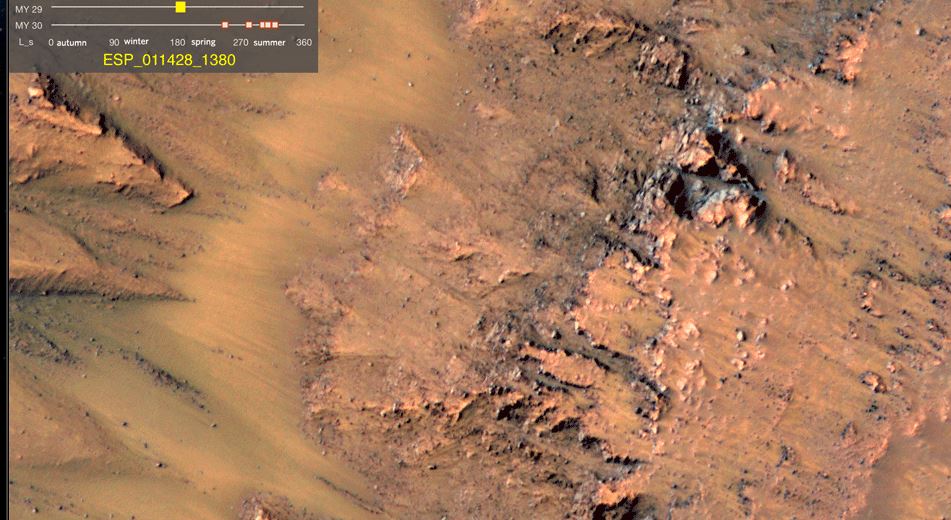NASA has released new photographs and information suggesting it has found flowing water on Mars.
The Mars water photographs have been put together into an animated image, showing multiple frames taking place from the spring of one year to the summer of the following year. The photos show a series of thin, dark “finger-like features” appear down a slope, darken and elongate, and then disappear.
NASA has been able to study this for several yearly cycles of seasons on the planet, and now has released these images as a potentially groundbreaking discovery. The evidence of these features suggest “salty liquid” water on Mars.
In NASA’s official statement, the organization explains their findings in this way:
“The images show flows lengthen and darken on rocky equator-facing slopes from late spring to early fall. The seasonality, latitude distribution and brightness changes suggest a volatile material is involved, but there is no direct detection of one. The settings are too warm for carbon-dioxide frost and, at some sites, too cold for pure water. This suggests the action of brines which have lower freezing points. Salt deposits over much of Mars indicate brines were abundant in Mars’ past. These recent observations suggest brines still may form near the surface today in limited times and places.”
The water has been found within the Newton crater on the planet, and was photographed by the High Resolution Imaging Science Experiment (HiRISE) camera on the Mars Reconnaissance Orbiter, which was launched in 2005. Each feature in the image is between .5 and 5 meters wide, and extends hundreds of meters in length.
Beyond finding direct, specific evidence of life on Mars, finding water has been one of the main missions of our continued exploration of the planet. Water is the harbinger of life, and these images show an active presence on the surface, far exceeding the imaginations of some who merely wanted to find more direct evidence of water on Mars in the planet’s past.
Charles Boldon, NASA Administrator, said “NASA’s Mars Exploration Program keeps bringing us closer to determining whether the Red Planet could harbor life in some form.”
Meanwhile, the source and the explanation for the water remains a mystery at this time. Alfred McEwen, the principal investigator for HiRISE, says that, “the flows are not dark because of being wet. They are dark for some other reason.” There is still much to be learned and understood about these Mars water flows.
In a time when manned space flight by the USA has been ceased for the foreseeable future, and NASA is being viewed by some in D.C. more as a strain on the budget than a crucial organization, perhaps this discovery will help to jumpstart the re-launching of future manned exploration missions. Indeed, Boldon believes that this data, “reaffirms Mars as an important future destination for human exploration.”
This article was first published by Jake Emen on Yahoo News on August 5, 2011


